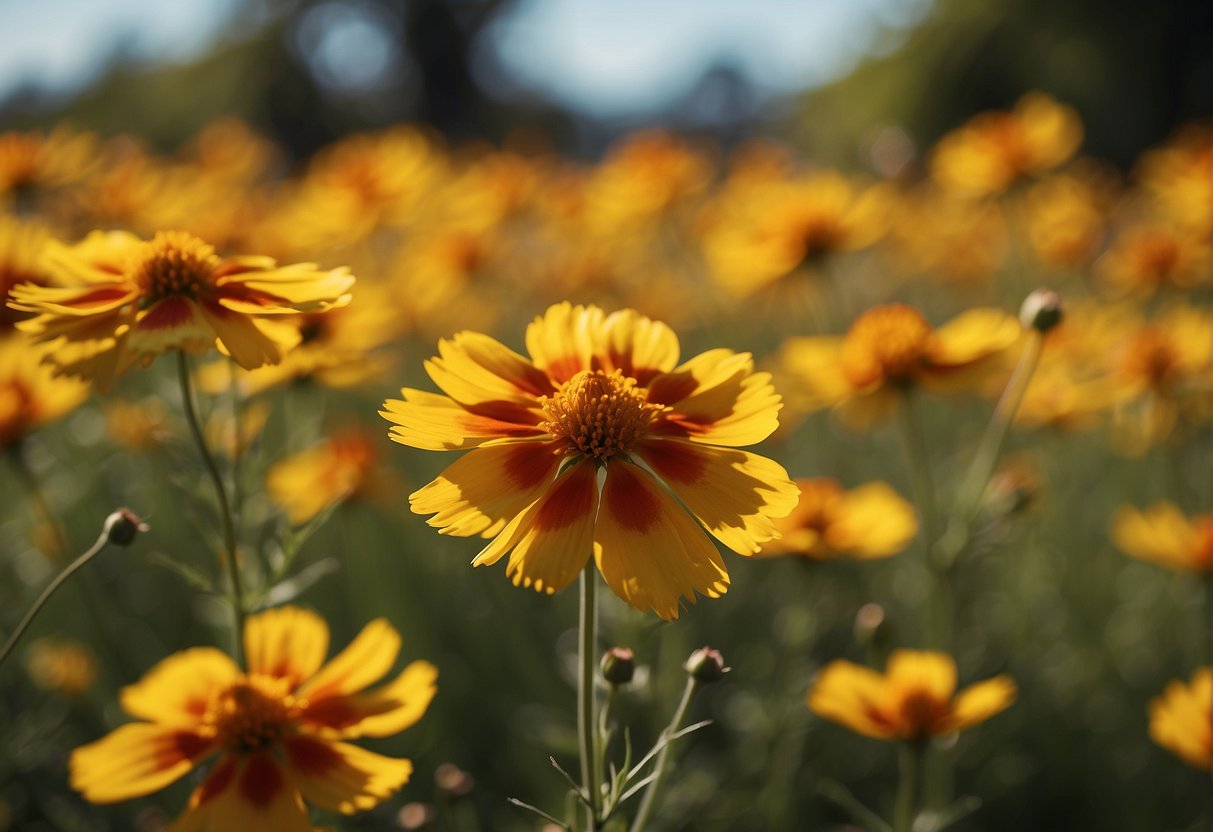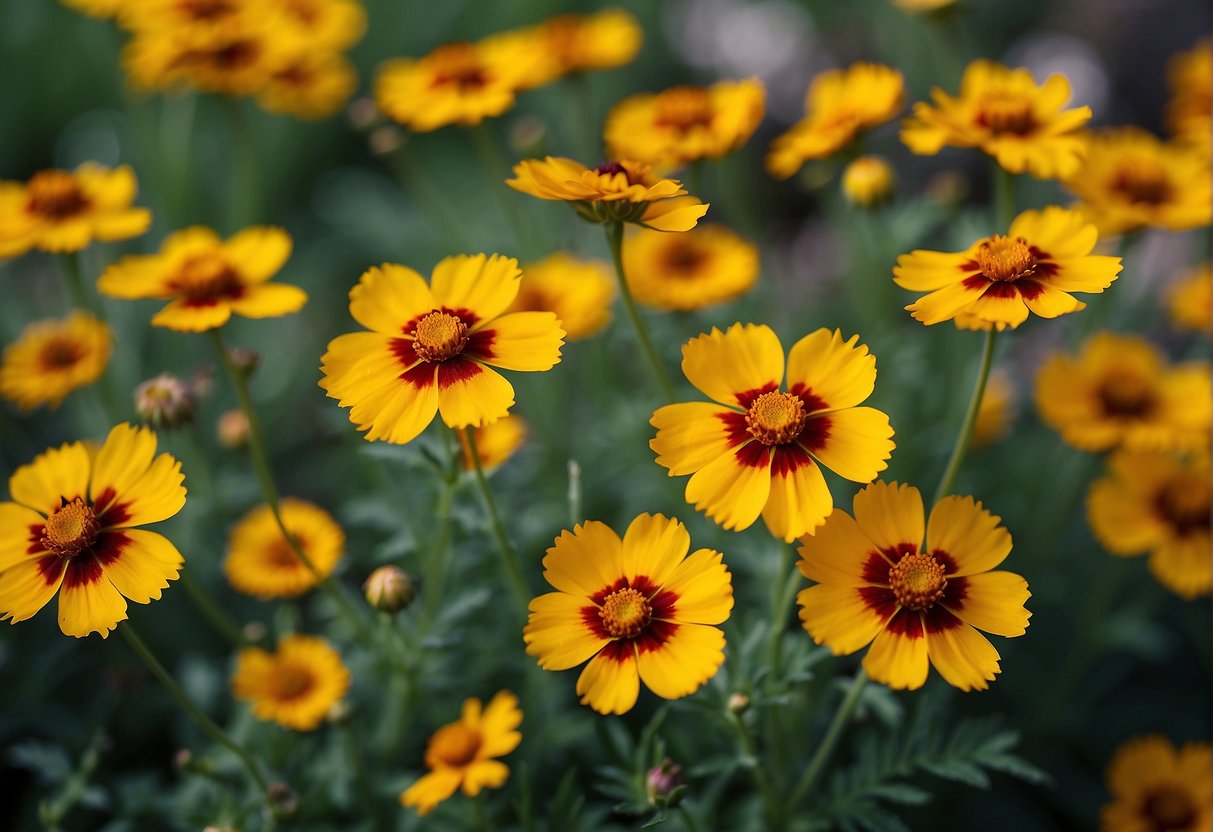Coreopsis Varieties: A Comprehensive Guide to Choosing the Perfect One for Your Garden
Coreopsis is a popular flowering plant that belongs to the Asteraceae family. This plant is widely known for its bright yellow blooms and is commonly found in gardens and landscapes. Coreopsis is available in various varieties, each with unique characteristics that make them suitable for different garden settings and climates.

Coreopsis is a perennial plant that can also be grown as an annual in colder climates. They are easy to grow and maintain, making them a favorite among gardeners. The plant is known for its long blooming period, which usually lasts from early summer to fall. Coreopsis varieties come in different colors, including pink, red, and orange, apart from the traditional yellow.
Gardeners can choose from a wide range of Coreopsis varieties, each with its own distinct characteristics. Some of the popular varieties include Early Sunrise, Moonbeam, and Zagreb. Early Sunrise is a bright yellow variety that blooms early in the season, while Moonbeam is a pale yellow variety that produces an abundance of flowers. Zagreb is a bright yellow variety that is known for its compact growth habit, making it ideal for small gardens or containers. With so many different varieties to choose from, gardeners can find the perfect Coreopsis to suit their needs.
Coreopsis Fundamentals
Coreopsis, also known as tickseed, is a popular native plant that is easy to grow and maintain. This section covers the basics of growing and caring for coreopsis.
Types and Species
There are many varieties of coreopsis, including Coreopsis grandiflora and Coreopsis verticillata. These plants are known for their bright yellow and gold flowers that bloom in the summer. They are also available in shades of pink, red, and orange. Coreopsis is a hardy plant that can grow in zones 4 to 9, according to the USDA hardiness zones.
Planting and Growing Conditions
Coreopsis is a sun-loving plant that thrives in full sun. It prefers well-drained soil and does not tolerate wet feet. The plant can grow up to 2 feet tall and 2 feet wide, so it needs plenty of space to spread out. Coreopsis is drought-tolerant, but it needs regular watering during the first growing season to establish a strong root system.
Maintenance and Care
Coreopsis is a low-maintenance plant that does not require much care. It is important to deadhead the plant regularly to encourage new blooms. Coreopsis can also be cut back in the fall to promote bushier growth. The plant is frost-tolerant, but it may benefit from a layer of mulch in the winter to protect the roots.
In conclusion, coreopsis is a beautiful and easy-to-grow plant that is perfect for any garden. With the right growing conditions and minimal care, this plant can provide years of enjoyment.
Design and Usage in Gardens

Landscape Applications
Coreopsis varieties are versatile plants that can be used in a variety of landscape applications. They are low maintenance and can be grown in borders, containers, and flower gardens. They are also great for garden design, as they come in a range of colors and heights.
For smaller gardens, dwarf varieties such as ‘Moonbeam’ and ‘Zagreb’ are ideal as they only grow up to 18 inches tall. Taller varieties such as ‘Golden Sphere’ and ‘Early Sunrise’ can be used as a backdrop for other plants in larger gardens.
Coreopsis is also deer resistant, making it a great choice for gardens in areas with high deer populations.
Attracting Wildlife
Coreopsis is a great plant for attracting pollinators such as bees and butterflies to the garden. The flowers are rich in nectar and pollen, making them a valuable food source for these insects.
To attract even more wildlife to the garden, consider planting different varieties of coreopsis with varying flower colors and bloom times. This will ensure that there is a continuous supply of nectar and pollen throughout the growing season.
In summary, coreopsis varieties are versatile and low maintenance plants that can be used in a variety of landscape applications. They are great for garden design, attracting pollinators, and are deer resistant. Planting different varieties of coreopsis with varying flower colors and bloom times can ensure a continuous supply of nectar and pollen for wildlife throughout the growing season.


